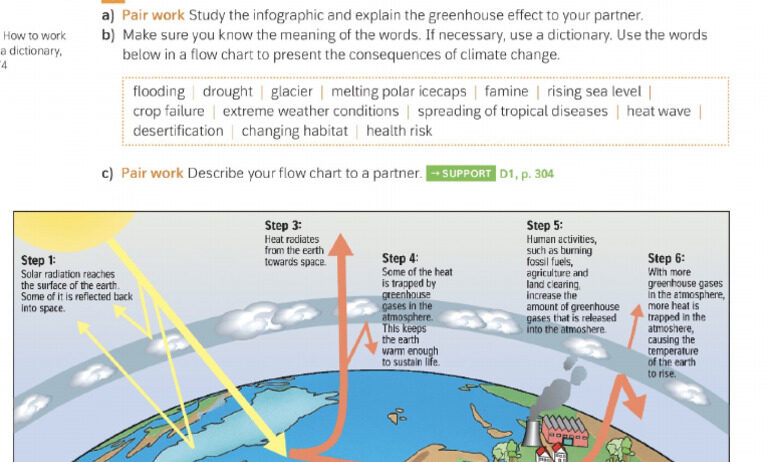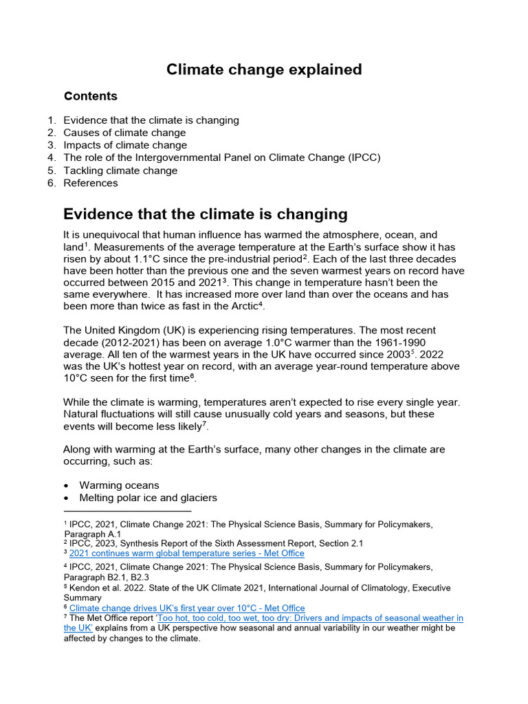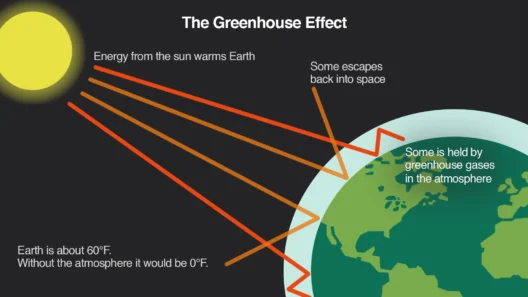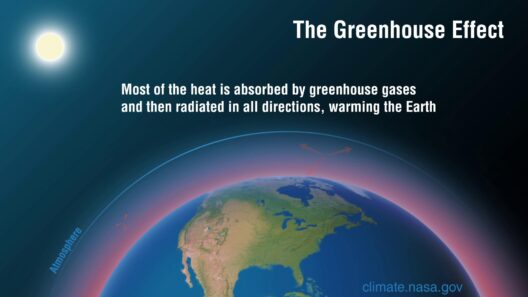The greenhouse effect is a natural phenomenon that contributes significantly to the Earth’s climate system. This process warms the planet and allows it to sustain life as we know it. However, with human-induced factors increasingly interfering with its delicate balance, understanding the intricacies of the greenhouse effect has never been more vital.
To truly comprehend the greenhouse effect, one must first understand how certain gases within our atmosphere play an integral role in this process. These gases, often called greenhouse gases, include carbon dioxide (CO₂), methane (CH₄), and nitrous oxide (N₂O). Collectively, they form a translucent layer that permits sunlight to enter while preventing some of the heat radiated from the Earth’s surface from escaping back into space.
Without this effect, the Earth would be inhospitable, with average temperatures plummeting to levels unimaginable. The balance, however, is precarious. Let us delve deeper into its mechanisms and implications.
Understanding the Mechanism of the Greenhouse Effect
The greenhouse effect begins with solar radiation. The sun emits energy that travels through the vacuum of space and reaches the Earth. Approximately 30% of this incoming solar energy is reflected back into space by clouds, atmospheric particles, and reflective surfaces like ice and snow. The rest is absorbed by the Earth’s surface, which then warms up.
Once heated, the Earth re-emits this energy in the form of infrared radiation, which has a longer wavelength compared to the original sunlight. Herein lies the pivotal moment: greenhouse gases in the atmosphere absorb and re-radiate some of this infrared radiation. This process traps heat, allowing the atmosphere to maintain a temperature that is conducive to life.
The aesthetic appeal of this process lies in its elegance. The interaction between sunlight, the Earth, and the atmosphere is a delicate dance of radiation and absorption, holding together the complex web of life. Look around—everything from the lushest forests to the most arid deserts exists because of this intricate balance.
However, the aesthetic beauty of this natural mechanism pales in comparison to the complications arising from anthropogenic factors. Increases in the concentration of greenhouse gases due to human activities, such as fossil fuel combustion and deforestation, exacerbate the greenhouse effect. This leads to an unprecedented rise in global temperatures, resulting in climate change.
The Role of Key Greenhouse Gases
(1) Carbon Dioxide (CO₂): An Unrelenting Culprit
Carbon dioxide, primarily released from burning fossil fuels, represents one of the most significant contributors to the greenhouse effect. Its long atmospheric lifetime means that once it is emitted, it lingers for decades, continually influencing the climate system. The increase in CO₂ concentration correlates directly with rising global temperatures and ocean acidification.
One might consider plant growth, as plants utilize CO₂ for photosynthesis. Yet, this is a double-edged sword. While increased carbon dioxide can enhance growth, it also leads to drastic environmental changes that undermine ecosystems’ integrity.
(2) Methane (CH₄): A Powerful Contender
Methane, although present in the atmosphere in lesser quantities than carbon dioxide, is over twenty times more effective at trapping heat. Released notably from livestock digestion and the decomposition of organic waste, its potential for global warming is disproportionate to its concentration. As thawing permafrost in the Arctic releases stored methane, the urgency to address emissions grows exponentially.
Identifying the sources and behaviors of methane offers crucial insights into mitigation efforts. The beauty of addressing methane emissions lies not just in reducing heat-trapping effects, but in enhancing agricultural practices and waste management that protect our planet.
(3) Nitrous Oxide (N₂O): The Understated Villain
Nitrous oxide comes from agricultural activities, specifically the use of synthetic fertilizers. While often overshadowed by carbon dioxide and methane in discussions surrounding climate change, nitrous oxide’s ability to amplify the greenhouse effect should not be underestimated. Understanding its sources and control measures presents an opportunity to protect our atmosphere while embracing sustainable agricultural practices.
The Consequences of an Intensified Greenhouse Effect
The ramifications of a heightened greenhouse effect resonate across the globe. Temperature increases are leading to more frequent and severe weather events, such as hurricanes and droughts. The disruption of ecosystems alters the balance of species, resulting in biodiversity loss. Additionally, rising sea levels threaten coastal regions, putting millions at risk.
Moreover, the societal impact includes food and water scarcity, public health dilemmas, and economic challenges. The aesthetic appeal of our changing planet is tragically juxtaposed with the stark realities of climate-induced disparities and injustices that marginalize vulnerable communities.
Mitigating the Impact: A Path Forward
While the greenhouse effect is a natural phenomenon, human activity has certainly escalated its effects. Therefore, it is imperative that individuals, governments, and organizations collaborate to mitigate their impact. The transition to renewable energy sources, improvements in energy efficiency, and advancements in carbon capture technology are essential steps forward.
Moreover, promoting sustainable agricultural practices and reducing waste can significantly curtail greenhouse gas emissions. The beauty of our ecosystem and the vibrancy of life depend on our ability to embrace and nurture this fragile balance.
In conclusion, the greenhouse effect is a multifaceted phenomenon, essential for life yet increasingly disrupted by human actions. Understanding its mechanisms, key gases, and far-reaching consequences encourages a sense of responsibility. Collective efforts toward sustainability can protect the Earth’s aesthetic beauty while ensuring a viable future for generations to come.







